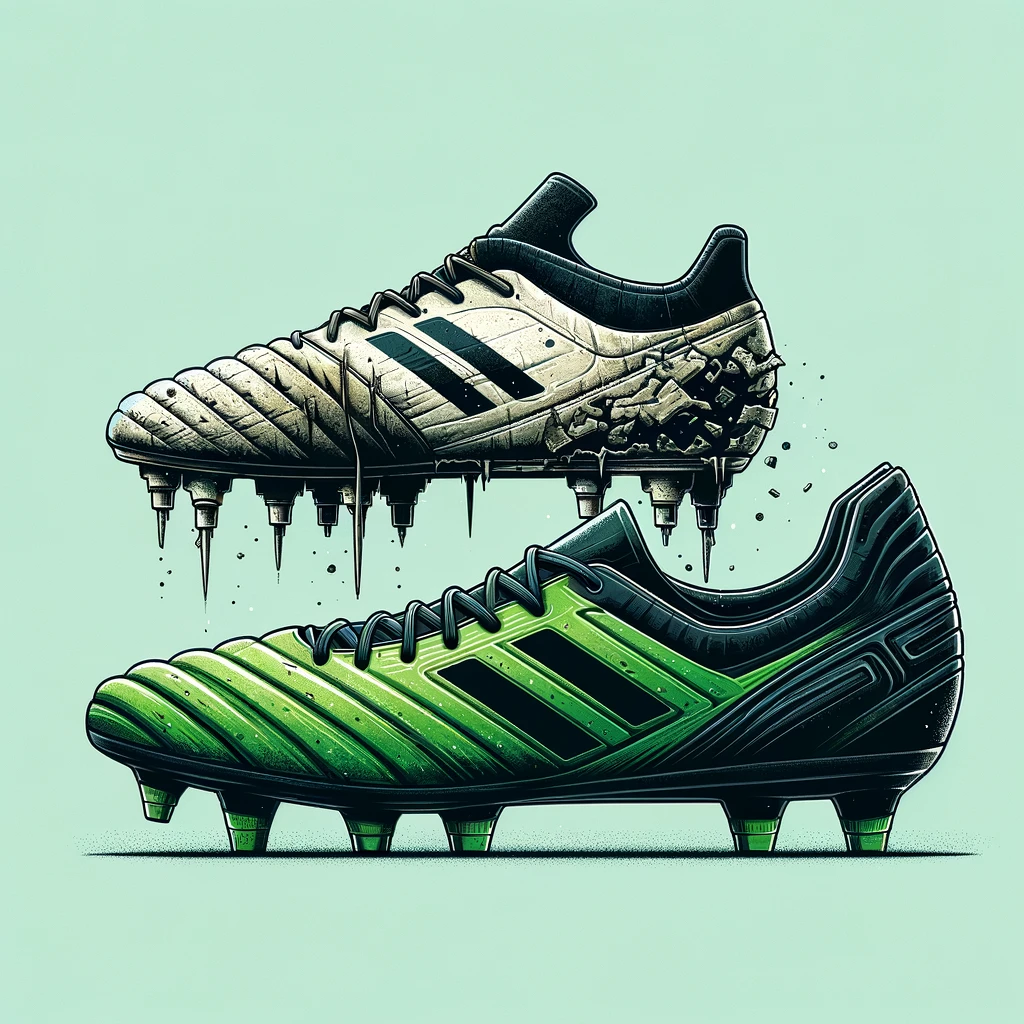Choosing the right time to replace your soccer shoes is crucial for maintaining your performance and safety on the field. This guide will discuss the key signs that indicate it’s time to invest in a new pair of soccer cleats.
Introduction
Soccer shoes are critical for optimal performance and safety during play. Over time, even the best cleats wear down and lose their effectiveness. Knowing when to replace them can help you continue to perform at your best while avoiding injuries.
Signs It’s Time to Replace Your Soccer Shoes
1. Worn-Out Soles
- Indicators: Look for smoothing of studs, especially in key areas like the forefoot and heel. If the studs are worn down significantly, it can affect your traction and stability.
- Impact: Poor traction increases the risk of slipping and injuries.
2. Damaged Upper Material
- Indicators: Tears or separations in the upper material, particularly around the flex points of the shoe.
- Impact: Compromises the shoe’s structure and your foot’s stability.
3. Loss of Support
- Indicators: If your shoes no longer feel as supportive or begin to feel unusually flexible, the internal structure may be breaking down.
- Impact: Reduced support can lead to foot fatigue and increased injury risk.
4. Discomfort and Blisters
- Indicators: New areas of discomfort or the development of blisters due to internal changes in the shoe.
- Impact: Shoes that no longer fit properly can cause foot injuries and affect your playing ability.
5. Compact Cushioning
- Indicators: The midsole feels less cushioned or does not recover its shape.
- Impact: Affects shock absorption, which can lead to joint pain and fatigue.
How Often Should You Replace Your Soccer Shoes?
- General Guideline: Typically, active players should consider replacing their cleats every six months to a year, depending on usage.
- Usage-Based: More frequent players, especially those training several times a week, may need to replace their shoes more often.
Frequently Asked Questions (FAQs)
How can I tell if my soccer shoes are too worn out?
Look for signs such as significant wear on the soles, thinning of the studs, visible tears or separations in the material, and a general feeling of reduced support and cushioning. If your shoes start slipping on the field or feel less comfortable, it’s likely time for a replacement.
Does playing on different surfaces affect how quickly my soccer shoes wear out?
Yes, the type of surface you play on can greatly influence the wear and tear on your shoes. For instance, playing on abrasive surfaces like artificial turf can accelerate the breakdown of the sole and upper materials compared to grass.
Can regular maintenance extend the life of my soccer shoes?
Absolutely! Cleaning your shoes after each use, allowing them to dry properly, and using techniques like rotating between multiple pairs can significantly extend their life.
What risks are associated with wearing worn-out soccer shoes?
Wearing worn-out soccer shoes increases your risk of slipping, which can lead to injuries such as sprains or strains. Additionally, inadequate cushioning and support may cause foot and joint pain.
Is there a difference in durability among different brands of soccer shoes?
Different brands and models vary in terms of materials and construction, which can affect durability. Higher-end models typically offer better durability and construction, but even these will wear out with regular use.
How do I know which new soccer shoes to choose when replacing an old pair?
When choosing new soccer shoes, consider the type of fields you play on, your foot shape, and playing style. Research current models, read reviews, and, if possible, try them on before buying to ensure they meet your needs.
What should I do with my old soccer shoes once I replace them?
Old soccer shoes can be recycled, donated, or repurposed for less intense activities. Some stores offer recycling programs for athletic shoes, or you can donate them to organizations that provide sporting equipment to those in need.
Conclusion
Regularly inspecting your soccer shoes for these signs can help you determine the best time to replace them. Keeping your cleats in good condition is essential not just for your performance but also for your safety. Remember, new shoes can also give you a mental boost, improving your confidence on the field.
